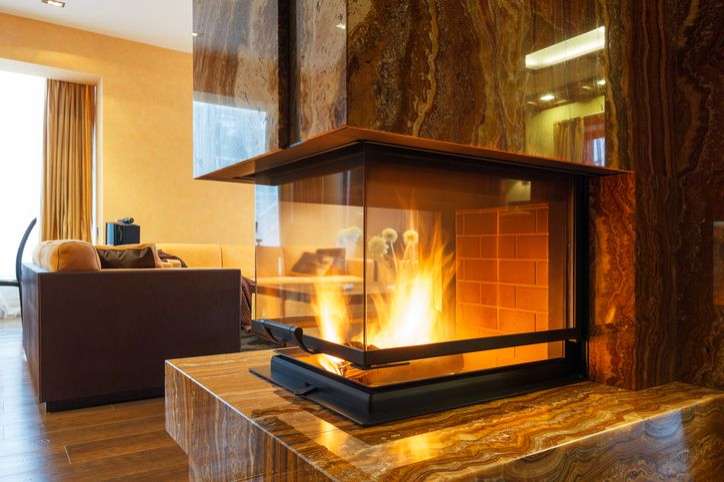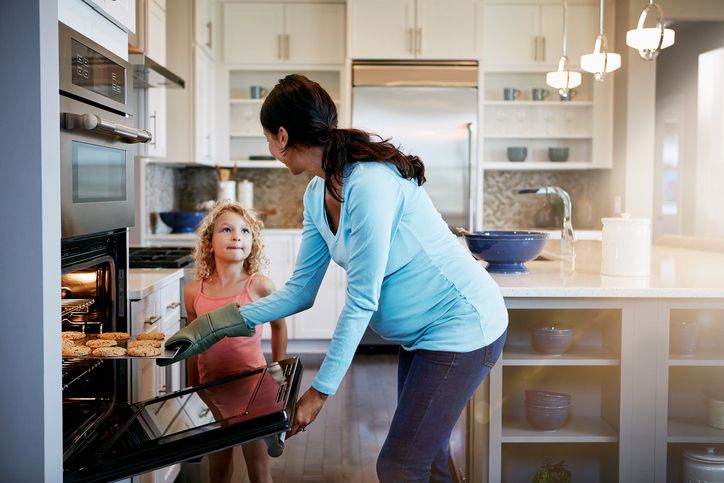In the cold winter months, everyone bundles up to go outside as the temperature drops and ice st to form on your lawn every morning whether or not it snows. Of course, the temperature doesn’t just drop outside, it gets a lot colder in your home as well and it’s all too tempting to keep the heater cranked up all through the winter months. That is until you get your first winter power bill.
The electricity needed to run a furnace or electric heating system rivals that of your AC in the summer and running the heater all the time is killer on both your power consumption and your plans for efficient green living. The good news is that there are more than a few ways to trap the heat in your home so it maintains for the longest amount of time and even generates a little extra heat from other sources to add to your toasty warm home environment without eating too much more power.
1) Check Doors and Windows
The first and most predominant cause of overly high heating costs is that somewhere in your home is an air leak, usually around the doors and windows. While you don’t have to be submarine levels of airtight, you do want to trap as much heat in the home as possible so that you can switch off the thermostat for a few hours a day and still stay comfy. Doors and windows require weather stripping and to be sealed completely to serve this purpose so do a full walk of the house ensuring that every aperture is closed and not leaking around the edges. You can check the weatherproofing by holding a small candle to it and watching where the flame goes.
Make sure to Check
- The living area and bedroom windows closed and latched
- Bathroom windows close and latch
- Front and back doors closed and latched
- The door to the uninsulated garage closed and latched
2) Seal the Pet Door
Now that all your people-sized doors are closed, it’s time to check on the pet door if you have one. You might be surprised to learn just how many people completely forget that a pet door is essentially a gaping hole to the freezing outside world and most pet doors do not seal completely when closed. If you have a pet door, inspect it and consider ways to keep it air-tight when closed. The usual mechanisms involve weights, magnets, felt or weather stripping, and smart pet doors that seal and lock, then automatically open when your pet approaches with either a chip or a special collar. If you don’t have time to DIY improve or replace a leaky pet door, consider closing it up during the winter until you can. Otherwise, heat will continue to escape through that route, wasting your energy.
3) Start a Cozy Fire
There is no more affordable source of heat than a beautiful blazing fire. If your home has a fireplace, consider starting a cozy evening fire when you get home from work instead of turning up the heat. With enough logs, you should be able to create a significant amount of heat that will spread through and then linger in your home for hours. You can even do a little bit of quick-and-easy recycling by using your excess cardboard like cereal boxes and delivery packaging to create a lot of heat very quickly.
Steps to Start Your Fireplace
- Open the flue and check the chimney for blockages
- Cold air will pour down for a moment
- Light a piece of paper or cardboard and hold it up to the flue to warm it
- This will reverse the cold airflow
- Stack one or two large fuel logs in the standing grate
- Add smaller logs and/or cardboard starter
- Light the smaller logs or cardboard
4) Clear the Snow Off Your Roof
Just like snow piling up on the shoulders of your jacket can make you much colder when standing outside, snow piling up on your roof does the same thing. Your attic, no matter how well insulated, is a part of the house, and snow sitting on top of your roof is directly transmitting all that cold into the airspace in your attic which can then travel into the rest of your home. To reduce this effect and keep your house warmer, use a long rake, broom, or some other long sweeping tool to pull piled snow off of your roof.
5) Use an ‘Airlock’ Entryway
Every time you open a door, a burst of cold air comes in and warm air goes out, and out with it goes some of the hard work your heater and fireplace have done. However, there’s no need to vent the warm air from your entire home every time someone arrives or leaves. An airlock entryway is the best way to hold onto most of your heat by stopping or slowing the exchange beyond a single room. Ideally, you will have a door between the rest of the house and your front entryway or mudroom but if this isn’t the case, you can simulate the effect by hanging up heavy thermal curtains where your entryway becomes a living room or hallway into the rest of the house.
6) Door Draft Stoppers
If your heating system is not central-air but is instead room to room, you can save a lot of energy simply by only heating the rooms you need. To trap the heat only in the set of rooms you’re using, it’s important to close any internal doors that lead to cold rooms or uninsulated areas like the garage or utility closets. Of course, internal doors don’t have weather stripping so you’ll need another way to keep cold air from seeping in under the door. Draft stoppers are the answer and they come in a nearly infinite collection of styles and materials. The simplest draft stopper is a towel stuffed under the door while others look like stuffed animals that slide over the under-door space and a few even mount to the door itself.
7) Bake Something Delicious
Finally, if you want to fill the house with good smells and give your oven double-duty as a heater and a source of delicious hot food, you can always bake something. From casseroles to batches of cookies, you’ve probably noticed that when the oven heats, so too do the rest of the kitchen and, to a certain extent, the rest of the house. You can use this fact to keep your home toasty warm while giving the heater a break simply by going on a fun baking spree.
Living greener this winter is not only morally comforting and great for your monthly bank balance, but it can also be a lot of fun. Soon you can be relaxing with your family in front of a roaring fire sharing a pan of freshly baked cookies.
If you have to resist any questions, please contact us!

About the Author
Jen is your go-to guru for crafting a cozy, green cocoon. 🪴 Her dive into sustainable building wasn’t just about saving the planet—it started as a mission to make family movie nights eco-friendly (and to ensure the popcorn was the only thing getting heated!). With a knack for breaking down the jargon, Jen turns eco-lingo into everyday language. Swing by the Green Living blog for a mix of earth-loving advice and home improvement hacks. Whether you’re just dipping your toes into green waters or you’ve been swimming in the deep end of DIY projects, Jen’s here to guide, giggle, and remind you that every eco-choice is a step towards a planet that thanks you… and maybe even sends a rainbow your way! 🌈



